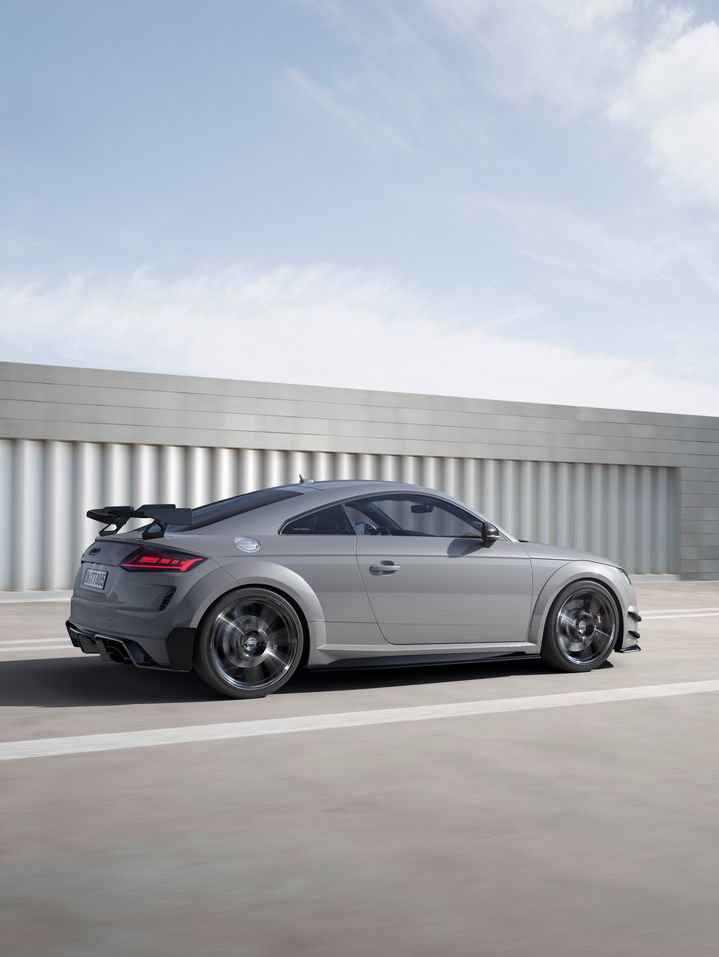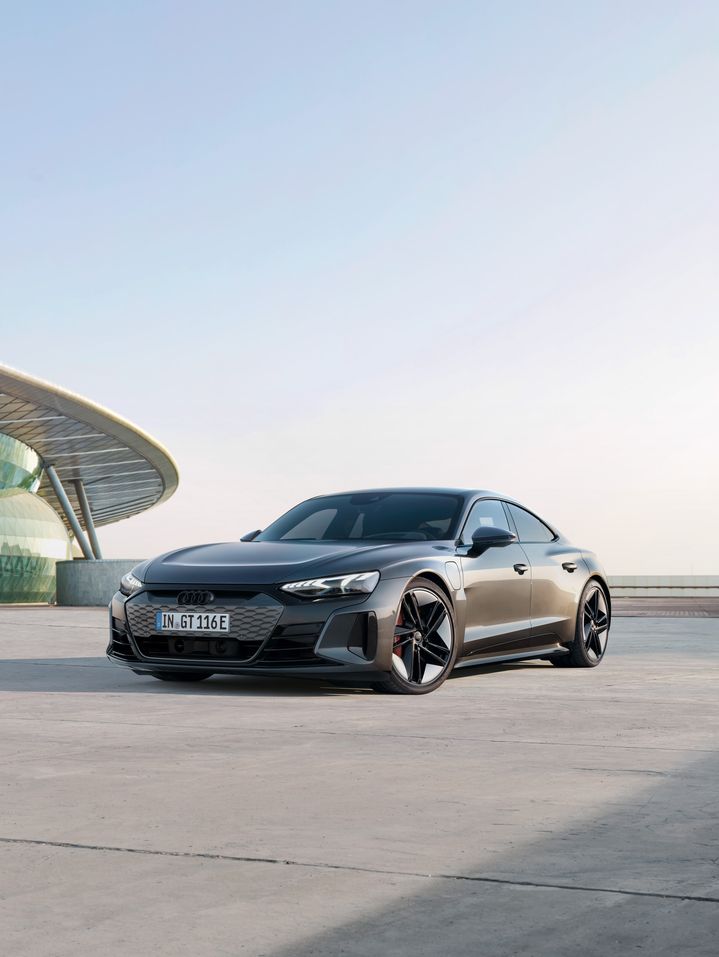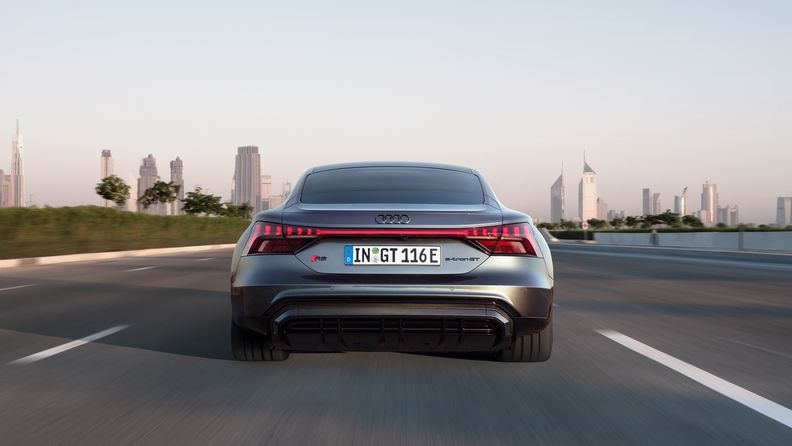“We’re taking our DNA into the future”
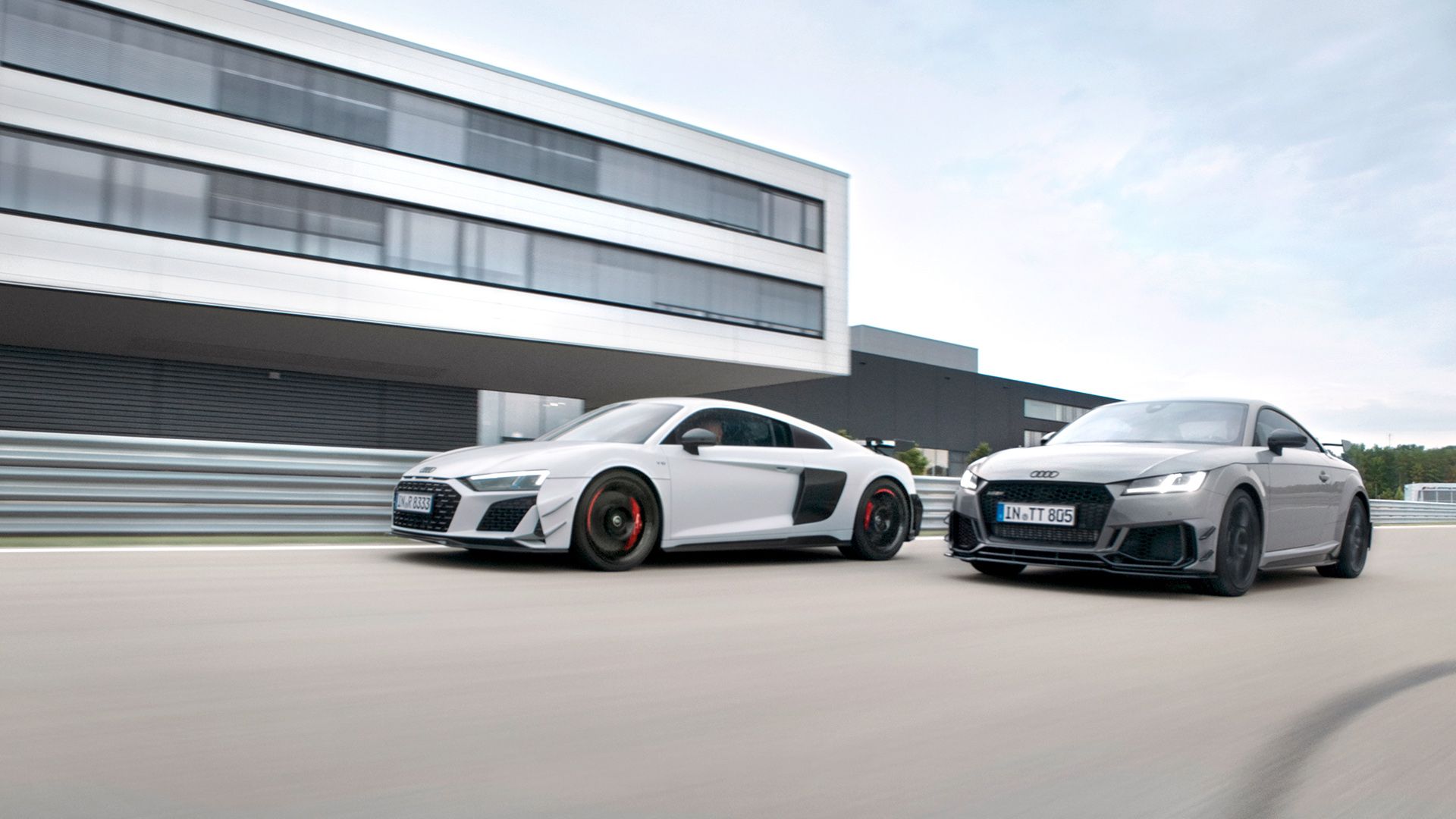

Mr. Bamberger, with Audi R8 GT¹,² and Audi TT RS Coupé iconic edition³,⁴ a chapter at Audi Sport is drawing to a close. The future is increasingly electrified. What is the predominant feeling - melancholy, pride or anticipation?
It's a balance. It's a very emotional topic. Both vehicles basically represent milestones in our corporate history. But turning points at which you have to let go of a technology and turn to something new have happened time and again in the past. The step forward is exciting. We have been very successful with what we do for a long time and are taking our DNA, what sets us apart, with us into an exciting future. That being said, our present is also already electrified with the Audi RS e-tron GT⁵.
How is the DNA of Audi Sport defined?
We position our vehicles at the top of their respective series in terms of sportiness and dynamics. But always with the basic attitude of being fully suitable for everyday use. In terms of design, our models are characterized by an expressive exterior and interior. This includes, for example, a somewhat more striking front apron or flared wheel arches. For us, add-on parts have always had a functional dimension in addition to their appearance. The important thing is and remains the harmonious overall composition. We stand more for defined athleticism than for bodybuilding.

You work at the interface to AUDI AG: Where and when do you and your team start with a new RS model?
In the past, as I said, we interpreted an existing AUDI AG model as an Audi Sport model. Accordingly, our work was downstream in the process. This order reversed at the latest with the commitment to electromobility. Due to the extreme interconnectedness of the drive system and the digital infrastructure in the vehicle, we have to start much earlier. Today, we are in the process of exchanging ideas from the first stroke on the proverbial blank sheet of paper. Whether it's proportions or battery sizes, our ideas can be implemented in a new model series right from the start. This is a new, very collaborative way of working for us and is absolutely essential if we are to achieve our goals in the age of electromobility.
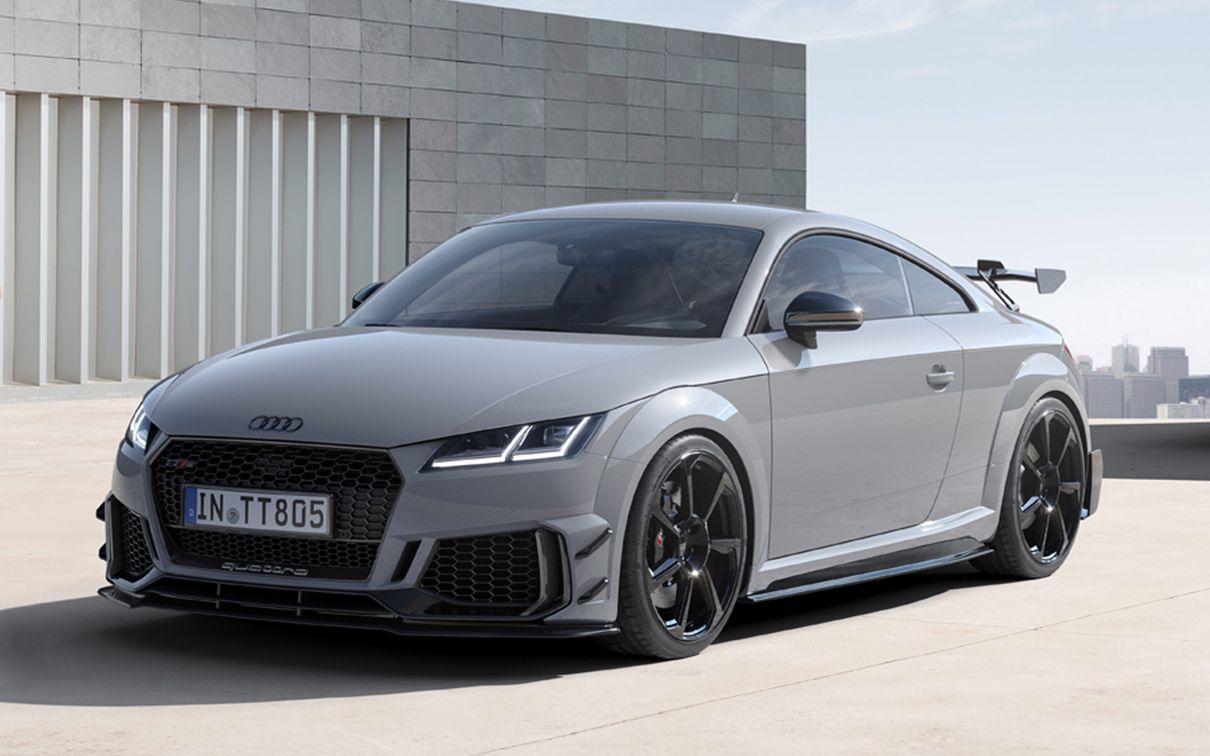
“Turning points where you have to let go of a technique have happened in the past. The step forward is exciting.”
What opportunities does electrification offer in the performance sector?
Quite honestly, extremely diverse. In addition to design and vehicle proportions, drive technology gives us freedom in developing vehicle characteristics. Here, we have the opportunity to offer our customers individually tailored driving modes as required. Our scope in the electrified vehicle ranges from very comfortable and suitable for everyday use to extremely sporty and agile. I think it's important to see these advantages, because people are also quick to talk about supposed disadvantages of electromobility in the performance sector, for example the loss of the emotionalizing sound of a high-performance combustion engine.
How do you deal with these reservations, especially when it comes to sound?
Sound is and remains important not only as an emotional factor. Performance-oriented models in particular need the acoustic feedback of the vehicle in order to be able to assess speed, the condition of the vehicle, and to control performance. In an electric vehicle, for example, the audible change in engine speed is no longer an indicator. This calls for creative and attractive technical solutions. We therefore began developing sounds for electric vehicles years ago. Our sound designers have created a machine-like technical character from various real sounds. You have to imagine it as if you were developing a new cooking recipe. In the end, there are many different soundtracks that then generate a specific sound depending on the driving situation, within the framework of the applicable standards and laws - which adds a great deal of fascination. In the Audi RS e-tron GT⁵, this can already be heard in the "e-tron sport sound".
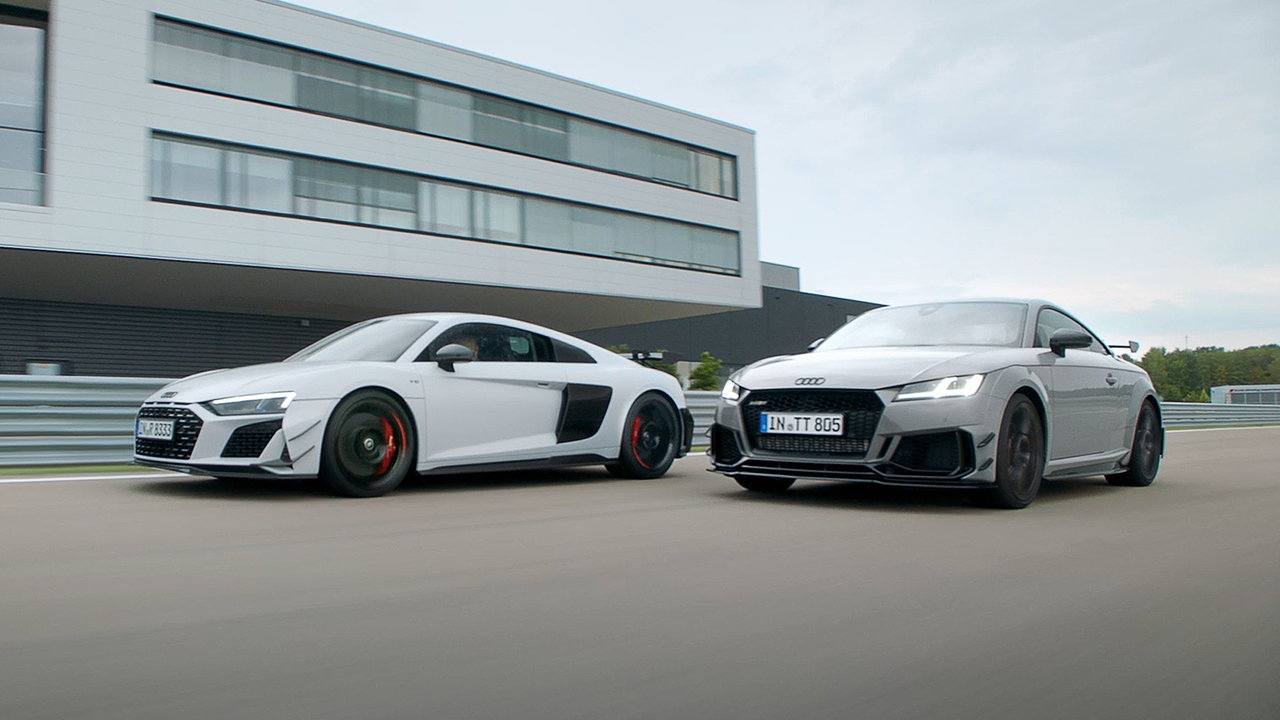
What is the RS sound of tomorrow?
There is a certain expectation from our customers: It must appear confident, be sporty and melodious, not too aggressive. And it has to be individual. Our strategy clearly defines how an RS model will be identified in the future and how each model will sound. Today, there is a range from a five-cylinder engine like the one in the Audi TT RS³,⁶, extremely sporty and powerful, to a commanding eight-cylinder in the Audi RS Q8⁷. In the future, we'll translate that into the changing electrified mobility.
With all the change, is today the most exciting moment to design mobility?
I have been developing vehicles for around 20 years and it has never been boring. But the step toward electromobility is a special one. Preserving what is good, but getting involved in the necessary transformation, living change, that is unique in a way. We have already made quite a lot of progress with some new projects, and many aspects are now becoming tangible for us. That spurs us on even more. We are currently working on really very exciting ideas and models.
¹Audi R8 GT: Fuel consumption (combined¹) in l/100 km: 15.0–14.9; CO₂ emissions (combined¹) in g/km: 341–339. Information on fuel/power consumption and CO₂ emissions with ranges depending on the selected equipment of the vehicle. Only consumption and emission values according to WLTP and not according to NEDC are available for the vehicle.
²Audi R8 GT: This special model is limited worldwide to 333 units. Please contact your Audi partner if you are interested. Fuel consumption (combined¹) in l/100 km: 15.0–14.9; CO₂ emissions (combined¹) in g/km: 341–339. Information on fuel/power consumption and CO₂ emissions with ranges depending on the selected equipment of the vehicle. Only consumption and emission values according to WLTP and not according to NEDC are available for the vehicle.
³Audi TT RS Coupé iconic edition: Fuel consumption combined¹: 9.1 l/100 km; CO₂ emissions combined¹: 207 g/km. Information on fuel/power consumption and CO₂ emissions with ranges depending on the selected equipment of the vehicle. Only consumption and emission values according to WLTP and not according to NEDC are available for the vehicle.
⁴Audi TT RS Coupé iconic edition: This special model is limited worldwide to 100 units. Please contact your Audi partner if you are interested. Fuel consumption combined¹: 9.1 l/100 km; CO₂ emissions combined¹: 207 g/km. Information on fuel/power consumption and CO₂ emissions with ranges depending on the selected equipment of the vehicle. Only consumption and emission values according to WLTP and not according to NEDC are available for the vehicle.
⁵Audi RS e-tron GT: Combined power consumption¹ in kWh/100 km: 20.2–19.3 (NEDC); 22.6–20.6 (WLTP); Combined CO₂ emissions¹ in g/km: 0. Electrical consumption and CO₂ emission figures given in ranges depend on the equipment selected for the vehicle.
⁶Audi TT RS Roadster: Fuel consumption combined¹: 8.7 l/100 km; CO₂ emissions combined¹: 200–199 g/km. Fuel consumption and CO₂ emission figures given in ranges depend on the tyre/wheel set used.
⁷Audi RS Q8: Fuel consumption combined¹: 12.3–12.1 l/100 km; CO₂ emissions combined¹: 281–276 g/km. Fuel consumption and CO₂ emission figures given in ranges depend on the tyre/wheel set used.
¹Audi R8 GT: Fuel consumption (combined¹) in l/100 km: 15.0–14.9; CO₂ emissions (combined¹) in g/km: 341–339. Information on fuel/power consumption and CO₂ emissions with ranges depending on the selected equipment of the vehicle. Only consumption and emission values according to WLTP and not according to NEDC are available for the vehicle.
²Audi R8 GT: This special model is limited worldwide to 333 units. Please contact your Audi partner if you are interested. Fuel consumption (combined¹) in l/100 km: 15.0–14.9; CO₂ emissions (combined¹) in g/km: 341–339. Information on fuel/power consumption and CO₂ emissions with ranges depending on the selected equipment of the vehicle. Only consumption and emission values according to WLTP and not according to NEDC are available for the vehicle.
³Audi TT RS Coupé iconic edition: Fuel consumption combined¹: 9.1 l/100 km; CO₂ emissions combined¹: 207 g/km. Information on fuel/power consumption and CO₂ emissions with ranges depending on the selected equipment of the vehicle. Only consumption and emission values according to WLTP and not according to NEDC are available for the vehicle.
⁴Audi TT RS Coupé iconic edition: This special model is limited worldwide to 100 units. Please contact your Audi partner if you are interested. Fuel consumption combined¹: 9.1 l/100 km; CO₂ emissions combined¹: 207 g/km. Information on fuel/power consumption and CO₂ emissions with ranges depending on the selected equipment of the vehicle. Only consumption and emission values according to WLTP and not according to NEDC are available for the vehicle.
⁵Audi RS e-tron GT: Combined power consumption¹ in kWh/100 km: 20.2–19.3 (NEDC); 22.6–20.6 (WLTP); Combined CO₂ emissions¹ in g/km: 0. Electrical consumption and CO₂ emission figures given in ranges depend on the equipment selected for the vehicle.
⁶Audi TT RS Roadster: Fuel consumption combined¹: 8.7 l/100 km; CO₂ emissions combined¹: 200–199 g/km. Fuel consumption and CO₂ emission figures given in ranges depend on the tyre/wheel set used.
⁷Audi RS Q8: Fuel consumption combined¹: 12.3–12.1 l/100 km; CO₂ emissions combined¹: 281–276 g/km. Fuel consumption and CO₂ emission figures given in ranges depend on the tyre/wheel set used.
